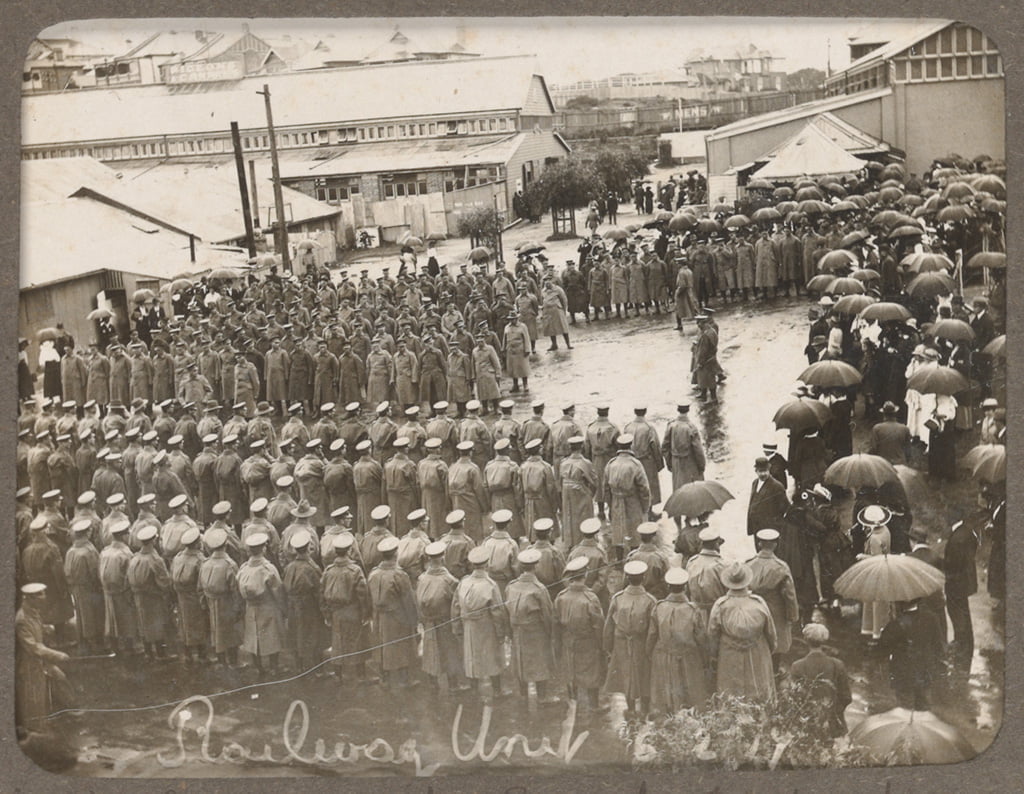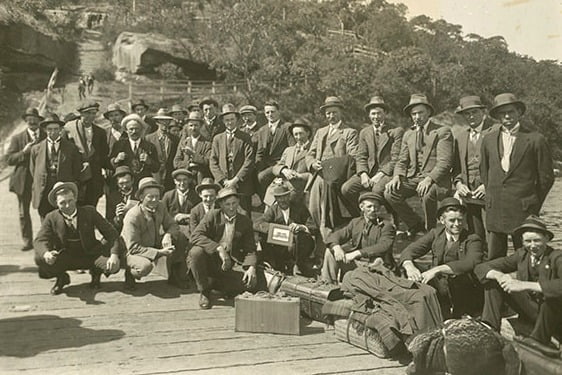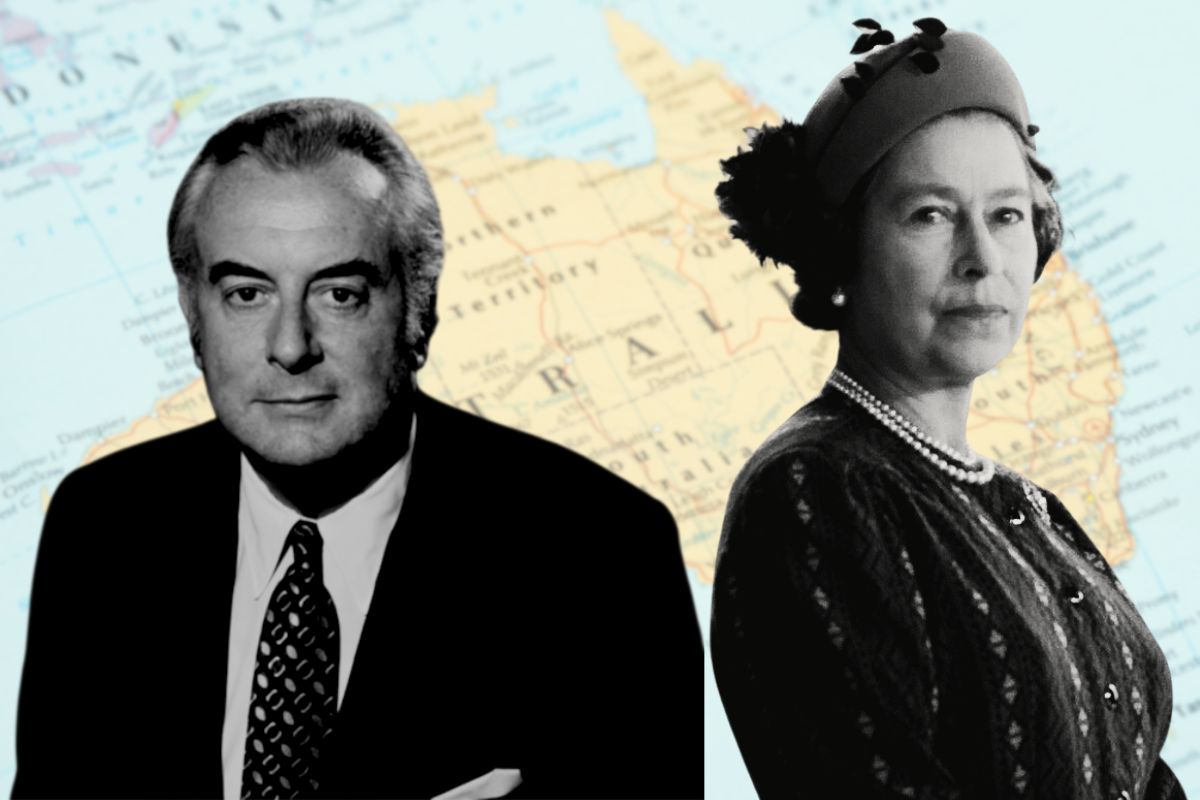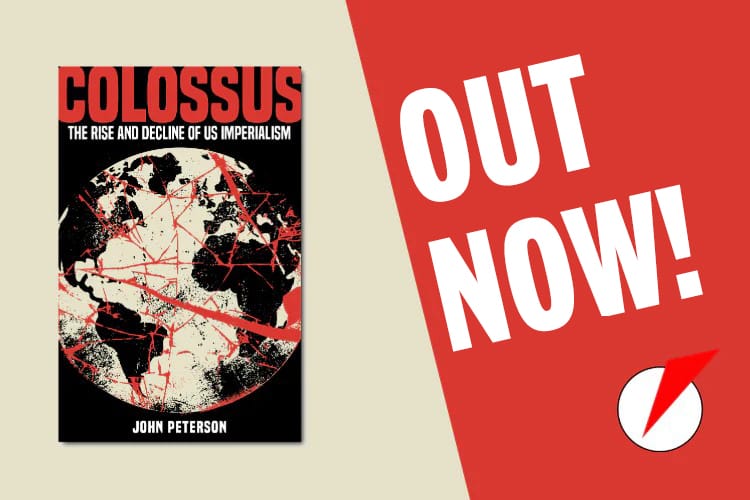The Australian general strike of 1917 began 100 years ago on 2nd August. It was not strictly ‘general’, as it was mainly confined to New South Wales. Nevertheless, there are numerous lessons that can be drawn from it. It showed that in times of crisis, the capitalist class will use all tools available to them to defend their privileges. Most importantly, the strike clearly exposed the limitations of the reformist trade union leaders, who acted as the biggest brake on the success of the strike.
We publish here the third and final part by Luke Boulby about this mass militant movement of the Australian working class.
An organised scab army
The disorganised and uncoordinated nature of the strike meant that the government was capable of using an organised force of scab labour in order to break the strike. A ‘farmers’ army’ comprised of the petty-bourgeois elements in Australian society (students, teachers, farmers, etc.) had been openly formed in training camps opened at the Sydney Cricket Ground (further proving cricket is a reactionary sport) and at Taronga Park. The number of volunteers that the government managed to muster peaked at 7,300 by 25th September. This was not a rag tag band of the frenzied petty-bourgeois, but an organised proto-fascistic army which was also supplied with arms by the government. The Royal Agricultural Society had also provided the volunteer army with 3,000 horses and storage for their ammunition and weaponry. The riot act was also read in military camps to threaten soldiers with what might happen if they thought of siding with the strikers and 1,500 special constables were sworn in to guard trams, trains and workshops.
In these camps, the ‘loyalists’ were treated to films and shows, banks and post offices were set up in these camps for convenience. There was medical assistance set up by the nearest University Medical School. Their food was also far better than any worker could afford, and with the government requisition of motor vehicles, the volunteers were driven to and from work under heavy police escort.
By the end of the first week of the strike, the number of trains had increased to nearly double from 40 (although still a small amount compared to the usual 660). The tram service had also increased from 60 to 175, which was now over 50% of the normal service. Of the workers of the Railway and Tramway Service, if you include the managers, only 49% were on strike. Because of the ineffectiveness of the leaders to pull in the other workers, a disciplined force like the volunteer army could be used to effectively exploit this weakness.
The trade union leaders did not see or perhaps even believe that this volunteer force was much of a problem. Although the number of strikers far outstripped that of the volunteer force, just in the railway and tram service alone, the ratio of volunteers to strikers was 1 : 2.5, which meant the volunteer force was a much more serious threat than the union leaders perceived them to be. They believed they held the trump card in this situation and therefore didn’t try to counter the effect of scab labour. Even with the operation of a skeleton service, the government was still able to sit back and wait for the strikers to be starved back to work.
Whilst the government would continuously show it was serious about smashing the strike and the unions, the union leaders blabbered about ‘legality’ that the “government had no power to override the rights already conferred on railwaymen and tramwaymen, which are specifically protected by Act of Parliament and judgments of the Arbitration Court.” The government would give the strikers a practical lesson in their power through the medium of batons.
The trade union leadership
The trade unions were formed during the period of the growth and rise of capitalism. They had as their task the raising of the material and cultural level of the proletariat and the extension of its political rights.
The development of Australia (and as a result the labour movement) took place during the British Empire’s unrivalled position as the most developed capitalist nation. Britain’s position during the 19th Century as an undisputed superpower allowed the ruling class to give some crumbs to the upper layers of the working class which developed and cultivated a labour aristocracy. This privileged layer, which earned good wages compared to the general population, developed a conservative outlook which grew from its new found social position. These privileged workers tended to support alliances with the liberal bourgeoisie and sneered at suggestions of class independence or class warfare.
With greater stability and resources, the trade unions required a professional apparatus and union dues allowed them to pay full-time officials. Whilst this constituted a huge step forward for the movement, these officials tended to be conservatively-minded and opportunist negotiators who were increasingly concerned with the day-to-day issues and piecemeal reforms.
Another factor in the conservatism of the Australian Trade Union leaders was the introduction of arbitration courts. The brainchild of liberals, the costly strikes of the 1880s and 90s had caused the bourgeoisie to change tack and so arbitration courts were created to attempt to smooth over class contradictions. The arbitration courts also provided the union leaders a convenient pressure value to release the steam of discontent in their ranks.
The trade union bureaucracy emerges from great periods of class struggle when the masses begin to move. However, during periods of relative social peace, this bureaucracy rises above the masses. The Australian trade union leaders, with the introduction of arbitration and Labor politicians in parliament, began to regard themselves as administrators rather than trade union agitators. Through the expansion of privileges and wages, which are massively different to the rank and file it claims to represent, it becomes both materially and psychologically separate from the masses. It has solved as Trotsky puts it, ‘its social question’. In other words, it has a guaranteed existence. In order to guard these privileges, it actively seeks to hold the masses back. It now has something to lose, so in that case, why should it take risks? However, when the passivity of the masses is broken, the power that the bureaucracy has amassed comes to an end. The omnipotence that it once exerted is transformed into stupidity and impotence.
The conservative outlook of the trade union leaders does not come just from the social privileges they have accumulated but also from pressure from the bourgeoisie. The trade unions do not exist inside a vacuum. They still exist within the framework of capitalism and as such come under the pressures of capitalism. Even the best organisations can degenerate under certain conditions. The formation of the conservative leadership is not just from them reaching these lofty heights, separated from the workers, but also under immense pressure and corruption on the part of the capitalists. Over a long period of time the ruling class has developed and perfected these methods for bribing and controlling the leadership of the working class. Trade union leaders were and are effectively groomed by the capitalist establishment and made to feel very important and respectable. Lenin noted that without the support of the labour and trade union leaders, capitalism would not last six weeks. To quote Trotsky:
“They praise him to the skies if he nibbles at the bait, and they give him a good brushing the wrong way if he takes the slightest step against the bourgeoisie… And this does not just happen once, but day-to-day, week-by-week, and year in and year out.”
The conduct of the trade union leaders during this strike perfectly demonstrates this. The government threw the accusation of being ‘unpatriotic’ and helping the enemy succeed at the trade union leaders. They also accused them of wanting to overthrow the government. The trade union leaders, naturally, took offence to this and were to prove not only in words, but also in actions that they were entirely committed to the capitalist system.
A statement issued by the Defence Committee shows how far removed they were from the rank and file and were actively acting as a brake on the strike. “The Defence Committee has been appointed with the object of carrying on negotiations for a settlement of the dispute,” it began. It laid out its three aims that the railway commissioner should return to their position before 1st June, the government set up a Royal Commission to investigate grievances, and that the men will return to work when the previous two conditions are fulfilled. The statement was concluded by Kavanagh who expressed the fear of the Defence Committee of what might happen if a settlement was not quickly reached. The conduct of the government throughout the strike proved that only a determined and organised fight against the government and bosses would have won this strike. The union leaders constantly acted as a brake on the masses and were determined to show the government how ‘respectable’ and ‘reasonable’ they were being and that there was no ‘extreme’ socialist elements behind the strike.
Nearly a week into the strike, when a deputation representing a number of mainly waterfront and industrial workers’ unions was sent to negotiate with the government, the spokesman for the deputation, A. C. Willis, would tell them:
“Matters have reached a stage where it is thought by those in charge of the dispute that other unions should be called on to declare their attitude. We therefore met them today. We quite realise the gravity of the situation and are anxious to do something to bring the dispute to a satisfactory conclusion”, he continues, “[W]e feel our responsibility as much as you do and if an honourable understanding can be reached even now, what threatens to be a great national calamity can be averted. You know as well as we do that unless something is done the mining and other unions will be involved in a few days. We want to avoid that. That is the reason we are here tonight. We are not here to threaten at all.” [My emphasis]
The government continuously accused the strike leaders of using the strike as a pretext for a revolutionary upheaval. The claims of this were most likely consciously fabricated to whip up the petty-bourgeois into a frenzy as a hammer to smash the strike. George Fuller, the acting premier of the NSW Government during the strike, issued this statement:
“The time has come for the people of this State to take a stand against those extremists who have for a long time been deliberately conspiring against public interest and who have been responsible for the industrial ferment which has disgraced this State from the beginning of the war. There is yet time to avoid a bitter struggle. The door is still open to reinstatement of sensible men. This door will be closed to many if they persist in their present attitude.”
In reply, the Secretary of the Locomotive Engine Drivers, Firemen and Cleaners’ Association would state, “the statement so monotonously repeated for specific purposes, that our fight is against the government as a government, is entirely wrong. We merely encounter the government on industrial ground … We clearly recognise that they control the general destinies of the country [my emphasis], and to assert that we are actuated by a revolutionary spirit or that we desire to usurp the functions of the government is positively absurd.”
Although the strikers were still determined to fight on, when the tops of the unions were showing increasing signs of weakness, the government pressed home its advantage. On 27th August, Fuller issued a statement reiterating that the strike was being manipulated by ‘Red’ elements:
“…the card system is only a pretext for a general industrial upheaval. The government has in its possession ample evidence that long before the cards were introduced a scheme was secretly originated aiming at the holding up of the whole of Australia by means of a general strike… [T]his general strike was organised to take place at a later date, but the men responsible for it could not control the Red Rag element and all that has happened is that the strike took place months before it was originally intended. This is why the government says there can be no compromise in a dispute of this kind.”
The supposed evidence was a bluff but this did not stop the union leaders falling over themselves to plead that there were no extremist elements behind the strike.
The need for a revolutionary party
 What this strike showed, is that despite the confused blabbering of the union leaders, day by day, as the strike went on, the workers were determined to fight till the end. The resilience and determination of the working class to fight can never be understated. The blame for such defeats lies squarely on the shoulders of the leadership. As Trotsky noted, “The historical crisis of mankind is reduced to the crisis of the revolutionary leadership.”
What this strike showed, is that despite the confused blabbering of the union leaders, day by day, as the strike went on, the workers were determined to fight till the end. The resilience and determination of the working class to fight can never be understated. The blame for such defeats lies squarely on the shoulders of the leadership. As Trotsky noted, “The historical crisis of mankind is reduced to the crisis of the revolutionary leadership.”
As long the trade unions remain reformist they will always lead towards betrayal. Reformism exists within the boundaries of capitalism as its main aim is to ‘reform’ capitalism. As such, if a situation arises which directly challenges private property relations or another of the foundations of capitalism – in this case the fight was mainly directed against the government (i.e. the state) – then the reformist leaders will end up betraying, as they have no perspective outside of the limits of capitalism; they have perspective of what it needs to be replaced with. Certainly, the lack of the subjective factor – a revolutionary party – which would be capable of leading the working class (and also sections of the middle classes) certainly led to the strike’s failure.
The only radical party that existed during this time with some influence in the working class was the IWW. Their paper, ‘Direct Action’, had a circulation of about 15,000, but their influence across the labour movement was quite limited. They had encouraged a number of wildcat strikes across the waterside and railways industries during the war years. Although they had influence among the advanced workers in Australia, their adventurist tactics and eventual outlawing would reduce them to a small sect. Their tactics included acts of sabotage such as setting a number of commercial buildings on fire to which Peter Larkin (brother of Jim Larkin) would state that it was “[F]ar better to see Sydney melted to the ground than to see the men of Sydney taken away to be butchered”. The printer of their newspaper was also arrested with a number of other men for counterfeiting £5 notes. These tactics would effectively invite the federal government to ban them in 1917, and since they had no influence across the working class to counter it, they drifted into insignificance. Their sectarian approach to the unions would also leave them unable to affect the strike. However, what was left of the IWW in 1920 would go on to help found the Australian Communist Party.
The working class, from its social conditions and experience, repeatedly throughout history has come to understand that it is necessary to unite in struggle against the employers and fight for the extension of political rights through government. The whole history of the labour movement in every country proves this fact. However, trade unionist politics/consciousness is not the same as a socialist consciousness. Trade union politics is what Lenin called “working-class bourgeois politics” precisely because it existed within the existing framework and fundamentally accepted the capitalist system.
What the IWW didn’t understand was that the trade unions, by themselves, were insufficient for the task of overthrowing society precisely because of this fact. As Trotsky explains:
“The larger the mass the trade unions embrace, the better they are able to fulfil their mission. A proletarian party, on the contrary, merits its name only if it is ideologically homogeneous, bound by unity of action and organisation. To represent the trade unions as self-sufficient because the proletariat has already attained its ‘majority’, is to flatter the proletariat, is to picture it other than it is and can be under capitalism, which keeps enormous masses of workers in ignorance and backwardness, leaving only the vanguard of the proletariat the possibility of breaking through all the difficulties and arriving at a clear comprehension of the tasks of its class as a whole.”
Whether the general strike could have developed into a revolution is a question which can only be speculated upon. What we do know is that the general strike gives a concrete example of the need for a revolutionary party – the trade unions by themselves are insufficient for this task. It also stresses that this party cannot be created ad hoc, but must have a period of building and steeling the party in the ideas of Marxism. Lenin once said that the Bolsheviks couldn’t have led the revolution in October 1917 if it wasn’t for the experience of the revolution of 1905. His point wasn’t that a party first needs to experience a revolution before it can lead the masses to revolution, but a more general one: that only with an understanding of the history of the class struggle can the working class and its fighters make a clear appraisal of the current situation and truly call itself the revolutionary leadership. To quote Trotsky:
“It is only with the aid of the party, which rests upon the whole history of its past, which foresees theoretically the paths of development, all its stages, and which extracts from it the necessary formula of action, that the proletariat frees itself from the need of always recommencing its history: its hesitations, its lack of decision, its mistakes.”
The only way the working class can be broken out of this cycle onto the path of revolution, therefore is through a workers’ party, with roots in the labour movement, armed with a revolutionary programme.






